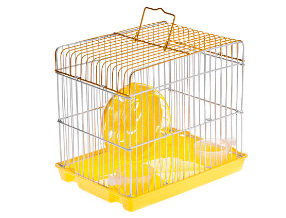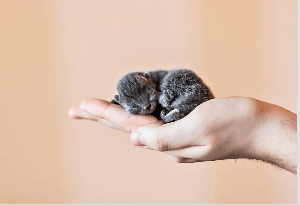Dive into the enchanting realm of baby chinchillas!
These little fluff balls aren’t just an overload of cuteness; they are complex beings requiring diligent care.
Trained in the world of furry creatures, I’m here to share expertise on chinchilla babies and their universe.
Yes, you read that right!
By the end of this piece, you’ll feel like you’ve just completed a mini-course on chinchilla babies.
Ready to embark on this furry journey? Let’s go!
Table of Contents
Understanding Baby Chinchillas
A chinchilla baby, is miniature wonders in a world full of mysteries. But what really goes on in those first few months of their lives? Let’s explore.
Physical Characteristics and Developmental Stages
A chinchilla baby boasts a coat of luxuriously soft fur and inquisitive, twinkling eyes. Born almost fully formed, they’re quite agile from the get-go. Over the first few weeks, they undergo swift growth, soon venturing and exploring their surroundings with vivacity.
Chinchilla Breeding and Reproduction
Chinchilla baby’s peculiar reproductive cycle. With a gestation period of approximately 111 days, mothers give birth to offspring that are rather self-reliant early on. This expedited growth and maturity play crucial roles in their survival instincts in natural habitats.
Importance of Socialization and Bonding
Building bonds is crucial for these tiny furballs. Early interactions shape their adult personalities, dictating their comfort around humans and fellow chinchillas.
A well-socialized baby chinchilla not only trusts but forms deep connections, making them wonderful companions in the long run.
Preparing for the Arrival of Baby Chinchillas
The excitement of welcoming a baby chinchilla is akin to preparing a nursery for a newborn. Ensuring their comfort and safety is paramount. So, how does one craft a snug corner for these fuzzy little guests?
Creating a Safe and Suitable Habitat
Safety is the prime concern. A baby chinchilla’s environment should be free from potential hazards. This includes securing all escape routes and removing any toxic materials they might nibble on.
Think of it as baby-proofing but for a tiny explorer with an insatiable curiosity.
Selecting the Right Cage and Bedding Materials
Choosing the right abode is essential. Opt for a spacious cage with multiple levels, allowing room for growth and play. The bedding should be soft and absorbent to ensure they sleep like royalty.
Materials like kiln-dried pine or aspen shavings make for ideal bedding, ensuring your baby chinchilla’s tender paws and body are cushioned.

Temperature and Humidity Requirements
Chinchillas thrive in moderate climates. Maintaining a temperature between 60-70°F with a humidity level below 50% is crucial. Too warm or too damp environments can lead to health issues.
So, investing in a good thermometer and humidity gauge is a wise call.
Proper Nutrition and Diet for Baby Chinchillas
Ah, nutrition – the cornerstone of health! Feeding chinchillas babies requires a precise blend of knowledge and care. Let’s make that culinary magic happen!
Nutritional Needs for Baby Chinchillas
Chinchilla babies primarily rely on their mother’s milk for sustenance. However, supplementing with high-quality hay becomes crucial as it provides the necessary fibers essential for every chinchilla baby’s digestive system. Sprinkle in some specially formulated chinchilla pellets, and you have a balanced diet.

Introducing Solid Foods and Weaning Process
Around 8 weeks, baby chinchillas begin to show interest in solid foods. Start by offering small amounts of hay and pellets. Gradually, as they get accustomed to solids, they’ll naturally reduce their dependence on milk, seamlessly transitioning into a well-balanced, solid-food diet.
Handling and Socializing Baby Chinchillas
Touch. Play. Bond. The trio for a happy chinchilla life. Approaching your furry friend? Do it with love, patience, and a touch of expertise.
Gentle Handling Techniques
When it comes to handling baby chinchillas, softness is key. Always approach them calmly, using both hands — one to support the bottom and the other to cradle the back. Swift or abrupt movements can startle them, so ensure every action is measured and deliberate.
Encouraging Social Interaction and Playtime
Chinchillas are innately social creatures. Regularly introducing them to play sessions, either alone with toys or with fellow chinchillas, aids in their mental and emotional development.
Toys like wooden blocks or safe chewable can be stimulating and entertaining for these little furballs.
Building Trust and Bonding with Your Chinchilla
Trust isn’t built overnight. Spend time near their cage, talk softly, and offer treats from your hand. Over time, this repeated gentle interaction reinforces trust, making your baby chinchilla more amiable and forming a deep, unbreakable bond with its caregiver.
Health Care for Baby Chinchillas
A healthy chinchilla equals a happy owner. Keep that fluff in tip-top shape with regular checks and hygiene practices. A stitch in time saves nine, after all!
Regular Veterinary Check-ups and Vaccinations
Routine vet visits are paramount. While chinchillas don’t typically require vaccinations, early veterinary check-ups can detect potential health issues, ensuring your furry friend remains in optimal shape.
Think of it as a proactive step towards a long, happy life.
Recognizing Common Health Issues and Remedies
Baby chinchillas may face issues like digestive troubles or respiratory concerns. It’s essential to recognize signs early—lethargy, lack of appetite, or unusual behavior.
Timely identification and consultation with a veterinarian can make all the difference. After all, prevention is better than cure.
Proper Hygiene and Grooming Practices
Chinchillas are clean animals, but they do need a little help. Regular dust baths help them maintain their lush coat, removing excess oils and dirt. Ensure their living space is clean, minimizing the risk of infections.
Proper grooming, coupled with keen observation, is your best ally in ensuring your baby chinchilla’s pristine health.
Training and Behavior Management
Training a chinchilla? Yes, it’s possible! With a sprinkle of patience and a dollop of consistency, watch them ace the game.
Litter Training and Enclosure Setup
Chinchillas are tidy creatures by nature. With consistency, you can encourage them to use a designated spot in their enclosure for waste.
Start by observing their preferred corner, then place a shallow tray with litter there. Regularly clean and maintain this area, reinforcing their natural inclination towards cleanliness.
Teaching Basic Commands and Tricks
While they’re no dogs, chinchillas can grasp basic commands. Using treats as incentives, you can teach them simple tricks like coming when called or standing on their hind legs.
The key? Patience and repetition. Celebrate small victories and ensure every training session is a positive experience.
Addressing Behavior Challenges
Baby chinchillas, like all young animals, may display occasional behavioral quirks. Biting, for instance, could be a sign of fear or discomfort. Instead of reprimanding, try understanding the root cause.
Is the environment too loud? Are they hungry? Addressing the underlying issue often solves the behavior challenges, fostering a trusting relationship.
Building a Loving and Enriching Environment
A happy chinchilla is one that’s surrounded by love, stimulation, and opportunities to explore. Curating an environment that caters to their playful spirit and innate curiosity isn’t just a responsibility—it’s a joy.
Providing Stimulating Toys and Enrichment Activities
Chinchillas, with their boundless energy and curiosity, thrive when presented with toys that challenge them mentally. Offering a mix of chew toys—like applewood sticks—ensures their teeth stay healthy.
Puzzle toys can keep them engaged, while hammocks and swings can become their favorite lounging spots. Rotate these toys regularly to keep their environment fresh and exciting.
Creating a Chinchilla-Friendly Play Area
A designated play zone outside of their cage works wonders. Ensure this area is chinchilla-proofed—free from wires they might chew on or tiny spaces they might squeeze into.
Incorporate climbing structures and safe hideaways. This “playground” allows them to exhibit natural behaviors, like jumping and exploring, in a controlled environment.
Promoting Mental and Physical Exercise
Mental stimulation is as crucial as physical activity for these lively creatures. Introduce new objects or scents periodically to engage their senses.
An exercise wheel, specifically designed for chinchillas, can help them burn off energy while also keeping them fit. Remember, a mentally and physically active chinchilla is a content chinchilla.
Conclusion
Navigating the world of baby chinchillas is a delightful journey. It’s all about love, care, and understanding their unique needs. Ready to embark on this fur-tastic adventure? With the right knowledge, your journey with chinchilla babies is set to be nothing short of magical!
FAQs
How soon can baby chinchillas be separated from their mother?
Baby chinchillas can typically be weaned and separated from their mother by 8 weeks of age.
What should I feed my baby chinchilla?
Feed them a combination of their mother’s milk (or a suitable replacement), high-quality hay, and specially formulated chinchilla pellets.
How often should baby chinchillas take dust baths?
Baby chinchillas can enjoy dust baths 2-3 times a week to keep their fur clean and healthy.
Alina Hartley is a small-town girl with a ginormous love of bearded dragons. It all started with Winchester, a baby bearded who was abandoned at the shelter by his former owners because of a birth defect that caused one front leg to be shorter than the other. Alina originally went to the shelter looking for a guinea pig, but one look at Winchester and it was love at first sight. From that day on, Alina has dedicated her life to learning everything she can about bearded dragons. She loves helping new beardie parents start their incredible journey with these magnificent reptiles.
Follow her on:
LINKEDIN
TWITTER.
Read her latest articles HERE
Learn more about her HERE.

